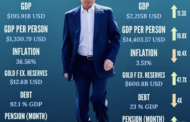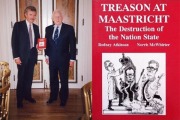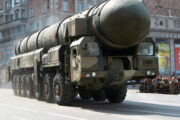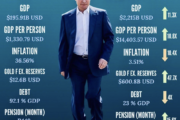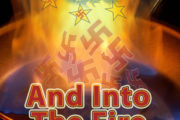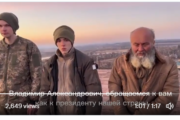19th February 2012
Narrator: These are the photos that Rudolf Scharping didn’t show. He didn’t show the Albanians’ weapons, their UCK badges and membership cards and their ammunition. He didn’t show the clear evidence of fighting.”
Henning Hensch (the photographer): “There can be no talk of a massacre here, and however inconvenient this might sound, these were military battles.”
The extent of the lies told about what was happening in Yugoslavia in the 1990s in order to justify the war waged by NATO has long been known – but not acknowledged by the press and mass media in Europe or the USA. The Sarajevo market bomb was not set by Serbs but by Bosnian Muslims, as the UN later confirmed. The skeletal “Serb concentration camp” victim was a nonsense, as the BBC’s John Simpson confirmed and the “10,000 deaths in Kosovo” were proved to be a complete myth.
Both the Commander of the OSCE’s Kosovo Verification Mission in 1999 (just before Yugoslavia was attacked) Roland Keith and the former Canadian Ambassador in Belgrade James Bissett have condemned the war and defended the Yugoslav Government. Bissett said that the 1999 attack was a “put up job” and quotes the most revealing admission by the former British Defense Minister, Lord Gilbert, who told the British House of Commons in July 2000 that the terms that NATO sought to force upon Milosevic at Rambouillet were deliberately designed to provoke war. Commander Keith described the KLA as a terrorist organisation which had a grip on most villages in Kosovo. He had direct experience of the lies told by villagers about ethnic cleansing and he said he never saw the Yugoslav Federal Army mistreat anyone in Kosovo.
Needless to say the politicised Hollywood film machine displays its usual ignorance and bias on the Yugoslav war. A recent film starring Angeline Jolie was a particularly crass example. A detailed analysis can be seen at: http://antisrbizam.com/en/jolie-s-debut/19-anti-serb-after-all
Now we have a respected German Television programme “Time Travel” broadcast in January 2012 providing clear proof of the fraud practised by the German Government to justify to their public an attack on Yugoslavia in 1999. It is the equivalent of the “dodgy dossier” of that other great “builder of Europe” Tony Blair, and shows the lies told by the then German Foreign Office Minister Rudolf Scharping to the press. The proof came from a German policeman who actually took the photographs used by Scharping but who knew there had in fact been no “massacre” of “civilians” but a battle between armed Kosovo terrorists and Serb forces. http://www.youtube.com/watch?v=aZTSGbvjXE4
This is a translation by Aleksandar Aksentijevic of the programme broadcast in January:
Newsreader: “We will now show you some pictures that are difficult to watch. They were made during the war in Kosovo. They are important because 13 years ago they were presented to the German public as a justification for the war against Serbia. However, those pictures were misused. This at least is the claim by the man who took them with the help of a colleague. He is from the state of Schleswig-Holstein.”
Narrator: “Henning Hensch, who is from Lutenburg, has done a great deal of thinking these last 13 years, ever since he became a part of the story of Kosovo, which had moved all Germans – the story, he claims, that fooled Germany.”
HH: “For me, Rugovo represents an example of the use of information for political ends.”
Narrator: “As a policeman, Hensch had seen a great deal, but nothing like what he saw in the Kosovan village of Rugovo on 29. 1. 1999. More important, Hensch could not believe the way in which the event was exploited a couple of months later. The then Minister of Defence Rudolf Scharping used the photos as evidence that the Serbs had committed a massacre against the innocent unarmed Kosovo Albanians.”
Rudolf Scharping: “These photos clearly show the massacre perpetrated on 29. January in the vicinity of Rugovo, confirming that the plan for the expulsion of the “Kosovars” was put into action.”
Narrator: “However, according to Hensch who took the photos, they represented evidence of a fire fight – not a massacre. On 29. January 1999, Hensch was asked to come to Rugovo (you can see him on the left). At that time he was an OSCE observer in Kosovo.”
HH: “When we got there, we saw a red van. As far as I can remember, there were 11 corpses, neatly stacked. Evidence of shooting could be seen on the front of the van. It was clear that it was a battle… and nothing else.”
Narrator: “A battle between the UCK rebels and Serbian forces. Three months after the event, Rudolf Scharping unveiled the photos as evidence that a massacre had been carried out on civilians.”
Scharping: “This makes it clear that the army and the special police forces and later… gangs of released convicts and others… took part in these murders. These images are shocking…”
Narrator: “The pictures from Rugovo purported to show what the German public desperately needed – a proof that NATO air strikes against Serbia were necessary.”
HH: “I was having breakfast in Skopje when I heard Scharping express his shock at what the Serbian “bad guys” had done to the “unarmed” Albanians.”
Interviewer: “What were your thoughts?”
HH: “That he must be off his rocker.”
Narrator: These are the photos that Rudolf Scharping didn’t show. He didn’t show the Albanians’ weapons, their UCK badges and membership cards and their ammunition. He didn’t show the clear evidence of fighting.”
HH: “There can be no talk of a massacre here, and however inconvenient this might sound, these were military battles.”
Narrator: “The photos showed by Scharping were taken after the official investigation had been completed and the bodies removed by the Serbian police. Despite the fact that journalists and cameras were present, Scharping stated three months later that the photos were secretly taken and brought to Germany by a German officer.”
Rudolf Scharping: “I would very much like to introduce the lieutenant to you, but he is currently undergoing treatment as a consequence of taking these photos and the trauma they caused…”
Narrator: “We inquired at the Federal Defence Ministry if a German officer was in Rugovo at that time and if he had taken photos. After a three-week enquiry, we received the following reply: ‘To the best of our knowledge, no German officer taking photos was in Rugovo on 29. January 1999.’
Balkan experts have suspected Scharping for a long time. One of them, Konrad Clewing, has no doubt that the German government sought evidence in order to persuade the public of the need for a war in Kosovo.”
Konrad Clewing: “The Socialist/Green coalition government had just come to power in the autumn of 1998 and was desperate to prove its loyalty and ability to its doubting partners.”
Narrator: “The manoeuvre was a success. German media believed Scharping’s story of the Rugovo ‘massacre’. The message was: ‘This is why we are fighting!’ but it was propaganda according to Clewing.”
Konrad Clewing: “The propaganda strategy was further developed and primed during that week against the background of public concern.”
HH: “I remember that the public support for military action against Serbia was falling, so they had to pressure the public… which they did using our pictures.”
Narrator: “However horrific, the photos were misused according to Henning Hensch to justify a war he considered unsupportable from the very beginning. This has made him suspicious and somewhat embittered.”
Newsreader: “We have tried several times to contact Rudolf Scharping… without success.”


